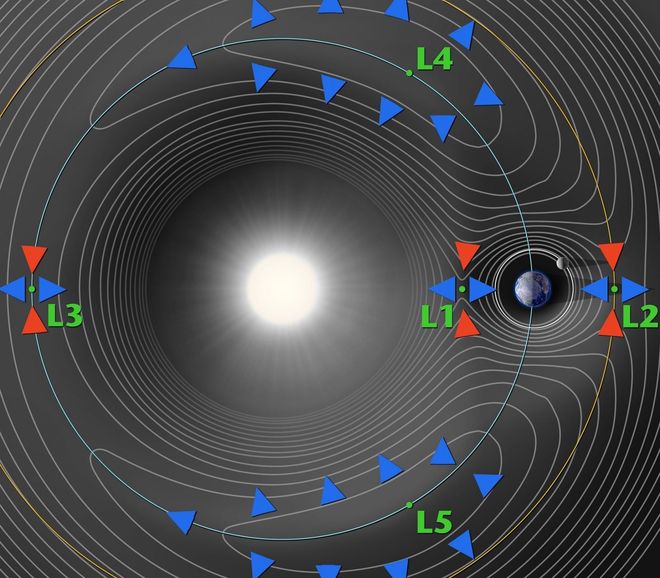I first came across Lagrange Points many years ago in Arthur C. Clarke’s novel A Fall of Moondust. It boggled my young mind, picturing satellites orbiting in seemingly static positions around the Moon!
Of course, in fact they were orbiting Earth and the Moon, affected by and in balance with both gravitational sources. (This is what I think some of the best science fiction does: explore scientific concepts, even in passing, within a fictional story.)
This morning, while researching for a project I’m working on, I found myself returning to Lagrange Points, a phenomenon beautiful in its simplicity. The American Heritage Dictionary defines Lagrangian Point as:
Any of five points in the orbital plane of two bodies, one of which is much larger than the other, at which a third, even smaller body will remain in gravitational equilibrium. Bodies located at Lagrangian points appear stationary with respect to the larger two bodies.
But that doesn’t really capture the magic. The Australian Space Academy describes it as:
For any two massive bodies rotating about their centre of mass there exist five ‘stationary’ points where the force on a third small body is zero (in the rotating reference frame).
As my physics teacher would always say, “When it doubt, draw a picture!”

But a picture is static, and can capture only so much of something that moves. I found this video animation that I think beautifully illustrates how these Lagrangian Points are stable in motion (if that makes sense). At about 1:05 the animation trails the paths taken by the objects at the Lagrangian Points.
hThen there’s this A/V lecture explaining the concept.
And if you really want to get into the nitty gritty, there’s this MIT lecture by J. Kim Vandiver on the physics behind it. (Hello, math, my old friend. Where’ve you been? I hardly know ya.)
In this age, when we’re constantly discovering things we’ve never seen, theorizing things that had never occurred to us, and realizing how much we don’t understand about the universe — a marvelous time — it’s oddly comforting to take in the simple beauty of the Newtonian physics behind these five points of equilibrium.